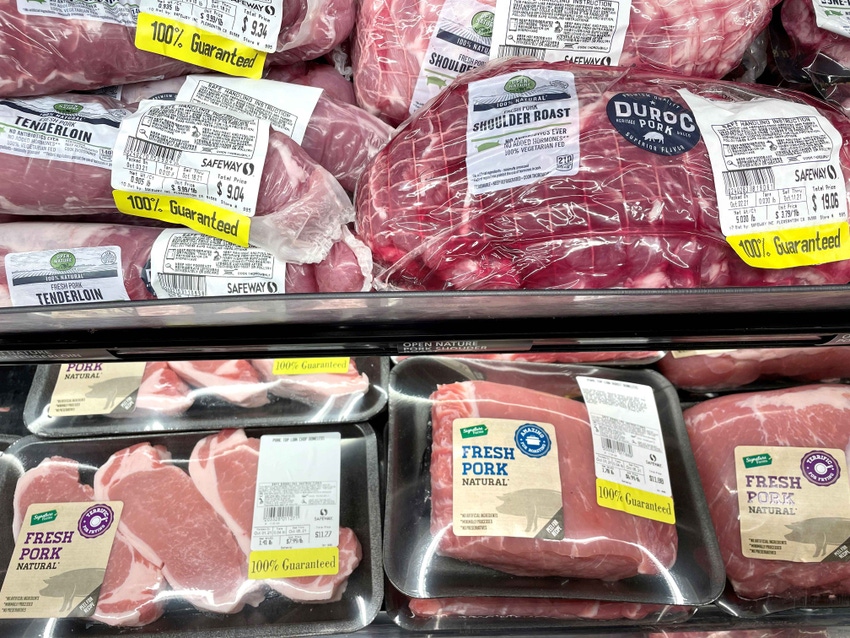Bright spots, uncertain trends forecast in global pork markets
Challenging returns and weak consumer demand continue to weigh on markets and trade.
October 27, 2023

Improved herd health has boosted pig crops this year; however, pork producers are still facing uncertain input costs and weak consumer demand. According to the latest RaboResearch report, Global Pork Quarterly Q4 2023, steady production gains as well as stagnant consumption rates will continue to put pressure on global pork markets and trade for the rest of the year.
“A renewed focus on cost reduction – given inflationary pressures resulting in the elimination of less productive operations – is also contributing to a rebound in production per sow,” says Christine McCracken, senior analyst – Animal Protein at Rabobank and author of the report. “Although this improvement is a welcome trend and lowers costs, the additional production is compounding regional oversupplies and weighing on the market.”
Another improvement has been the plunge in corn and soybean prices in Q3 2023. A successful harvest in the Northern Hemisphere has helped, with feed costs dropping 20- 30% year-over-year in most regions. However, McCracken notes oilseed inventories "leave little margin for error" and weather could come into play.
“With the emergence of an El Niño pattern, the focus will shift to potential impacts on the South American growing season,” adds McCracken. “And while grain and meal prices are expected to remain lower, other rising costs – including labor, insurance and financing – remain high for most producers.”
For U.S. producers, McCracken notes lower feed costs following the U.S. harvest may help improve 2024 returns but could slow herd reductions. Rabobank anticipates a 0.8% increase in U.S. pork production in 2023.
While inflation remains a concern for consumers, pork remains a dietary staple. Pack types and sales channels have continued to shift though.
“With consumers still cautious, particularly in light of rising geopolitical uncertainty, we expect an ongoing focus on reducing spending,” says McCracken. “Pork consumption should benefit from the high cost of competing proteins and more consumers cooking at home.”
U.S. pork values are expected to continue to disappoint due to weak domestic demand. “Pork values continue to trail year-ago levels (cutout -5% YOY) on weaker ham values (-19% YOY). Belly and loin values are in line with a year ago,” McCracken notes. “Retail and foodservice demand remains volatile, with feature activity during National Pork Month and lower cold storage inventories (-13% YOY) helping to stabilize markets in the near term.”
Sufficient production and Proposition 12 enforcement are also expected to put pressure on U.S. pork prices throughout the rest of the year.
Global importers are also taking a cautious approach to pork in 2023 and McCraken anticipates this to carry over into 2024.
“For Q4 2023, we expect global trade to remain slow given large inventories and relatively high domestic production (and low pork prices) in key importing regions,” McCracken notes. “Rising EU pork prices may also limit export volumes.”
Since U.S. pork remains competitively priced, Rabobank anticipates pork exports to remain steady through the end of 2023. However, frozen inventories and weaker demand in some markets could challenge U.S. exports into 2024.
As for pork activity in other regions, McCraken notes overall lower feed costs and improved productivity have boosted industry optimism, but are also offset by poor producer returns and weak consumer demand:
Mexico- Lower feed prices are providing some relief, but hog prices remain under pressure and are down 22% YOY. Pork imports from the United States were up 8% in July, with much of it bone-in ham due to processor demand.
Canada- Reduced capacity and margin pressure has slowed down pork production in the country. Hog prices are about 10% below year-ago levels across most provinces. In August, YOY export volumes were down 3.1%, values down 2.8%.
Europe- EU pork production was down 8.6% YOY in the first seven months of the year, as demand remains soft. According to Rabobank, weaker consumption trends since the end of the summer are to blame for the recent carcass price weakness. While EU export volumes decreased to most countries this year, Vietnam was up 45% YOY for the first seven months of 2023.
China- Pork prices remain low but are anticipated to be stable in Q4 2023 with seasonal demand. Overall, the sow herd has been shrinking, however large farms have maintained volumes. Pork imports through August 2023 increased 9% YOY, with shipments from North and South America increasing the most due to an abundant supply.
Southeast Asia- African swine fever outbreaks in Vietnam are impacting production and prices, but Rabobank expects prices to rise in 2024. Imports from the U.S. are expected to increase in the coming months due to a comprehensive strategic partnership. Pork production in the Philippines is slowly recovering from ASF. Brazil remains the largest pork supplier to the country.
Japan- Domestic pork production has started to increase again due to the decline in feed costs and strength in domestic demand. Imports of chilled pork volumes remain steady, while frozen pork continues to struggle as inventories remain high.
South Korea- Hog production remains steady despite the country’s continuous battle with ASF. Year-to-date U.S. pork shipments to South Korea have been up 12% YOY, however September volumes were down 18% YOY. An increase in the duty-free pork quota for the rest of 2023 is expected to boost imports from Mexico, Brazil and Canada.
Brazil- The Brazilian pork market is expected to remain competitive in Q4. The industry saw a 26% YOY drop in feed costs, with even lower costs expected into 2024. China remains the leading destination for Brazilian pork, with Hong Kong and the Philippines the next largest importers.
You May Also Like



